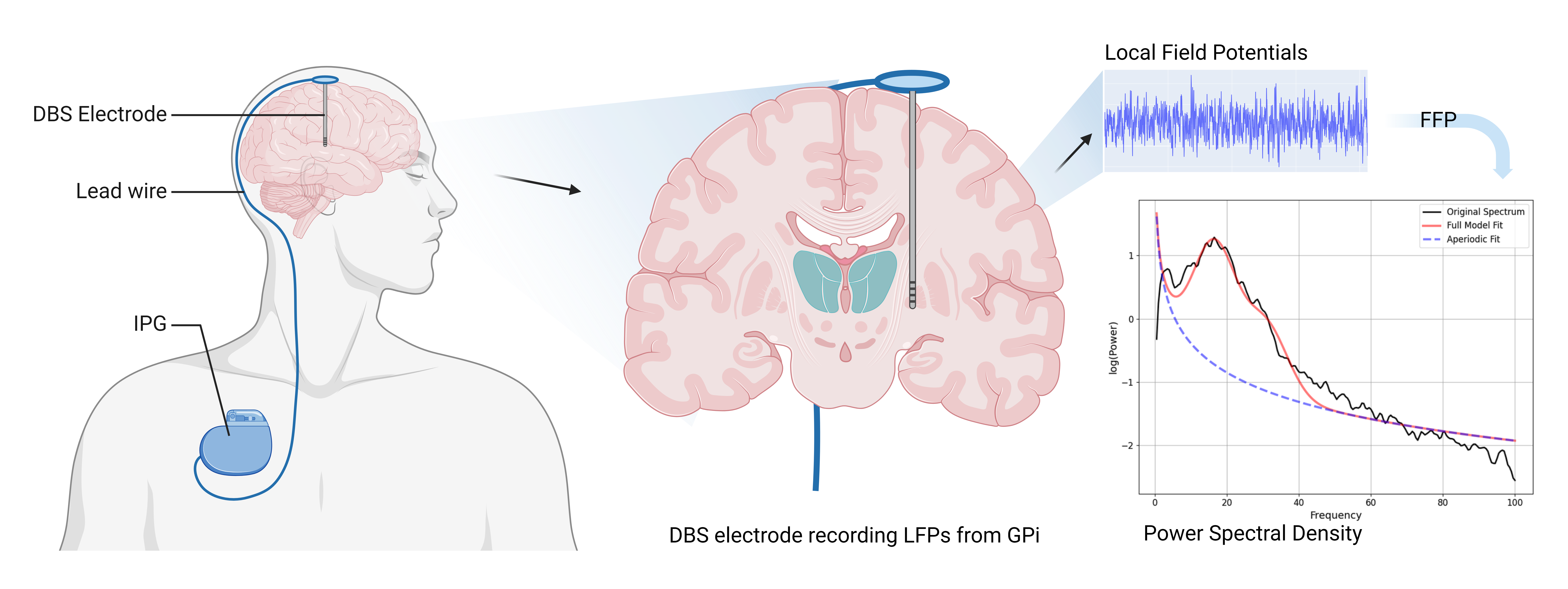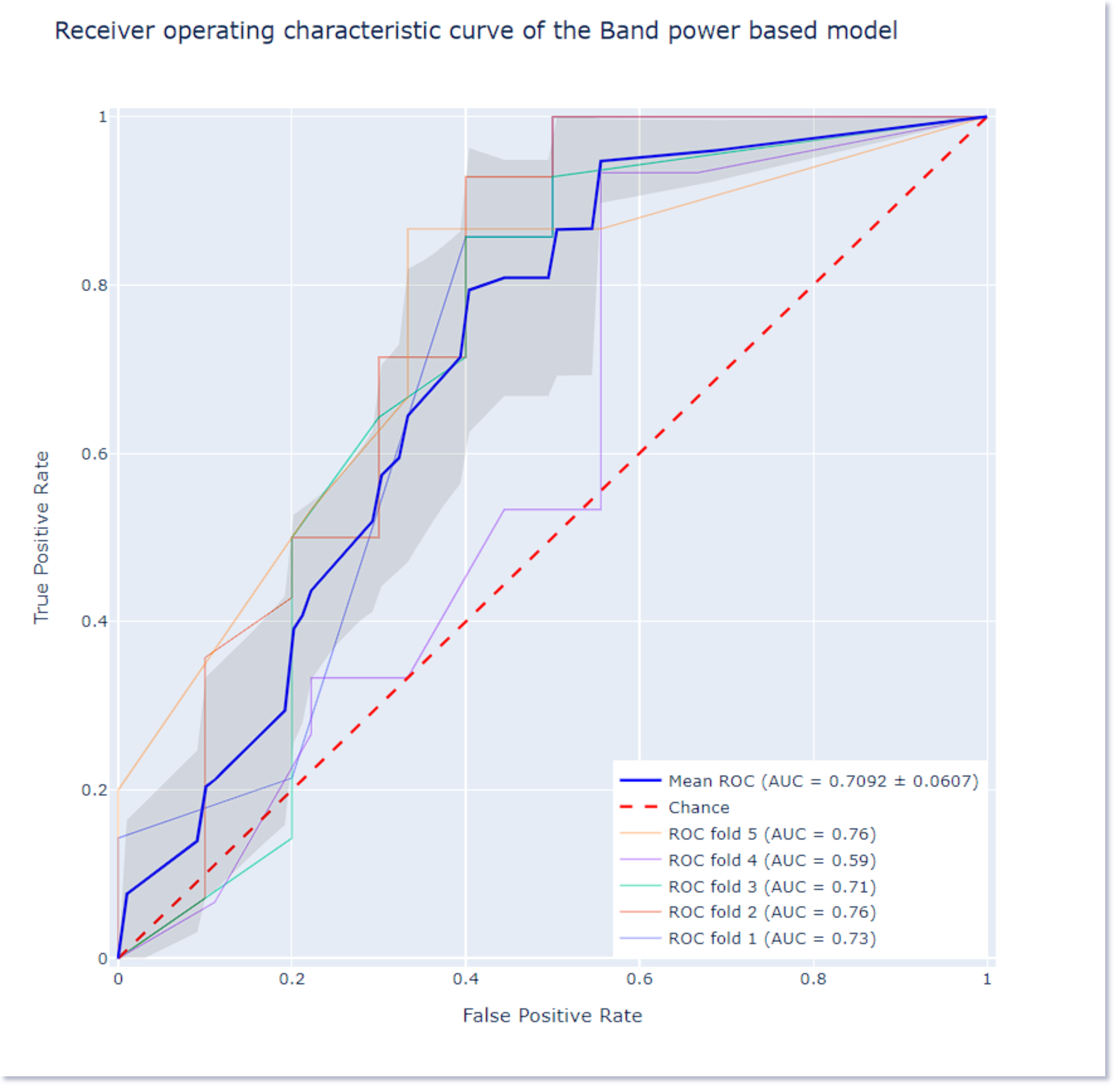Objective: To develop a machine learning (ML) algorithm capable of predicting the optimal deep brain stimulation (DBS) contact based on neurophysiology.
Background: DBS is an effective therapy for medication-resistant Parkinson’s disease (PD), but individual patient outcomes can vary significantly. Currently, optimization of stimulation parameters is a manual and time-consuming process based on subjective assessments that can take weeks to months [1]. Recent advancements in DBS technology permit recording of neural physiology in the form of local field potentials (LFPs). In PD, LFP spectral features, more specifically beta band (13-30Hz), correlate with motor symptom severity [2]. However, whether LFP features can be used to predict optimal stimulation parameters is still unknow.
Method: This is a retrospective study on PD patients with DBS. We included patients with STN or GPi DBS and who completed 4-month of DBS optimization with LFP recordings at first and last visits. First visit LFPs were transformed into power domain illustrated in [figure 1]. The average power in frequency bands were input features for the ML-models. ML analysis was done in two patient groups, one with all the patients, the other had a subset of patients with high variability in beta band power (BBP) among contacts. The ML models were evaluated by 5-fold cross validation with mean area under receiver operating characteristic curve (AUC-ROC) across the 5 folds as performance metric. In addition to the ML models we performed manual selection based on the contact with the highest BBP among the two contacts to obtain a floor accuracy.
Results: 120 brain hemispheres from 101 patients (102 GPi, 18 STN) were analyzed in the first group by our ML models. Gradient boosting classifier, with mean (SD) AUC-ROC of 71 (6) illustrated in [figure 2] and mean (SD) F1-score of 77 (6) had the best performance. For the second group (35 GPi, 15 STN), bagging with mean (SD) AUC ROC of 84 (8) and F1 score of 72 (8) had the best performance. The ML models perform better than manual contact selection, which has an accuracy of 47%.
Conclusion: The findings indicate that LFP data can guide selection of contacts for DBS programming. This lays the groundwork for developing an automated algorithm that can substantially reduce the clinical workload and duration of DBS programming in patients who have recently undergone DBS implantation.
Signal processing workflow.
AUC ROC curves of gradient boosting model.
References: [1] Patel, B.; Chiu, S.; Wong, J. K.; Patterson, A.; Deeb, W.; Burns, M.; Zeilman, P.; Wagle-Shukla, A.; Almeida, L.; Okun, M. S.; and Ramirez-Zamora, A. 2021. Deep brain stimulation programming strategies: segmented leads, independent current sources, and future technology. Expert Review of Medical Devices, 18(9): 875–891. Publisher: Taylor & Francis eprint: https://doi.org/10.1080/17434440.2021.1962286.
[2] Van Wijk, B. C. M., De Bie, R. M. A., & Beudel, M. (2023). A systematic review of local field potential physiomarkers in Parkinson’s disease: From clinical correlations to adaptive deep brain stimulation algorithms. Journal of Neurology, 270(2), 1162–1177. https://doi.org/10.1007/s00415-022-11388-1.
To cite this abstract in AMA style:
V. Lavu, J. Cagle, T. de Araujo, C. de Hemptinne, J. Wong. Deep brain stimulation contact selection using Neurophysiology and Artificial intelligence [abstract]. Mov Disord. 2024; 39 (suppl 1). https://www.mdsabstracts.org/abstract/deep-brain-stimulation-contact-selection-using-neurophysiology-and-artificial-intelligence/. Accessed December 25, 2025.« Back to 2024 International Congress
MDS Abstracts - https://www.mdsabstracts.org/abstract/deep-brain-stimulation-contact-selection-using-neurophysiology-and-artificial-intelligence/


